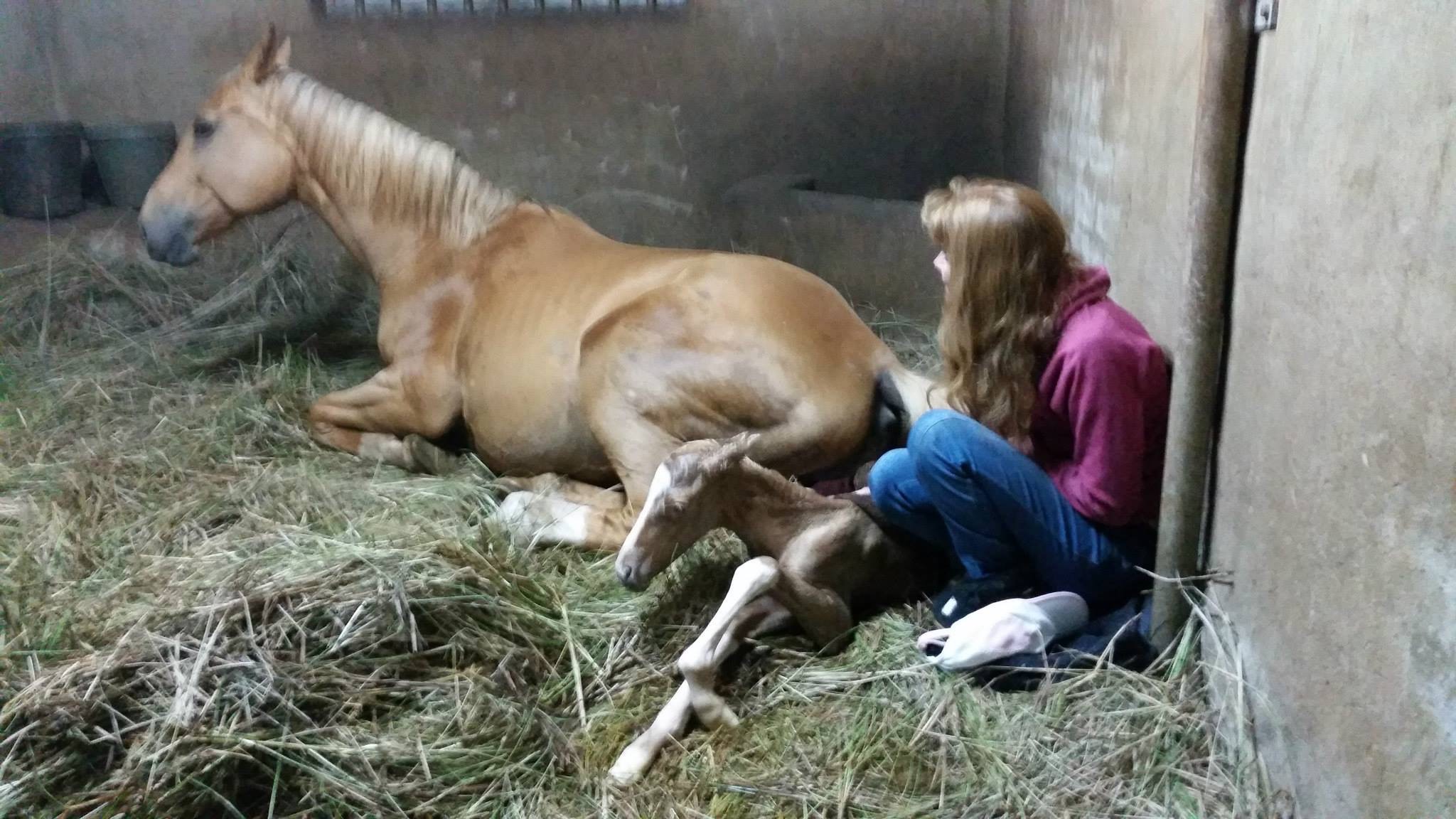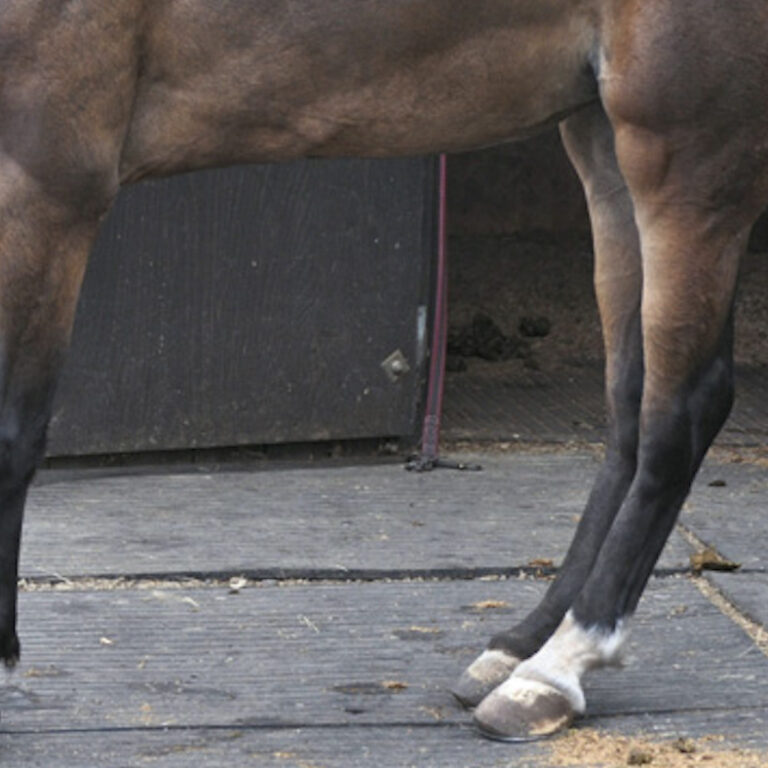Understanding Contagious Equine Metritis (CEM)
Contagious Equine Metritis (CEM) stands as a significant concern within the equine industry, impacting the reproductive health of horses. This contagious bacterial infection is caused by the bacterium Taylorella equigenitalis and primarily affects the genital tract of horses, particularly mares. In this introduction, we’ll provide a brief overview of CEM and highlight its importance in the equine industry, emphasizing the critical role of awareness and preventive measures for horse owners.
Overview of CEM
CEM is a highly contagious sexually transmitted disease that primarily affects the reproductive system of horses. Taylorella equigenitalis, the causative agent, targets the genital tract, leading to inflammation, discharge, and potential infertility in affected mares. While mares are the primary victims, stallions can become asymptomatic carriers, contributing to the spread of the disease during breeding.
Significance in the Equine Industry
The impact of CEM extends beyond individual horses to the broader equine industry. Outbreaks of CEM can result in economic losses, disrupt breeding programs, and hinder international horse trade. Recognizing the significance of CEM is crucial for horse owners, breeders, and professionals involved in equine reproduction, as it directly influences the success and sustainability of breeding operations.
Importance of Awareness
Awareness serves as the first line of defense against CEM. Understanding the nature of the disease, its modes of transmission, and the potential consequences for equine reproductive health empowers horse owners to take proactive measures. By being informed, horse owners can contribute to early detection, effective management, and prevention of CEM outbreaks within their equine communities.
Preventive Measures for Horse Owners
Preventing the spread of CEM requires a collaborative effort between horse owners and veterinarians. Implementing biosecurity measures, maintaining hygiene in breeding facilities, and conducting routine screenings are essential components of a comprehensive preventive strategy. Vaccination, when available and appropriate, can add an extra layer of protection against CEM.
An informed and vigilant equine community is better equipped to safeguard the reproductive health of their horses. This blog aims to shed light on CEM, offering insights, guidelines, and practical tips to help horse owners navigate the challenges posed by this infectious disease. Together, let’s explore the nuances of CEM and work towards a future where equine reproductive health remains robust and resilient.

What is CEM?
CEM, or Contagious Equine Metritis, is a bacterial infection that primarily affects the reproductive tract of horses. Understanding the key aspects of CEM is crucial for horse owners and professionals in the equine industry.
Definition of CEM and its Causative Agent
- CEM Definition: Contagious Equine Metritis is a highly contagious and venereal disease that affects horses, specifically their reproductive systems.
- Causative Agent: The bacterium responsible for CEM is Taylorella equigenitalis. This bacterium has a particular affinity for the genital tract of horses, causing inflammation and various clinical signs.
How CEM is Transmitted Among Horses
- Venereal Transmission: The primary mode of CEM transmission is through natural mating or artificial insemination. Infected stallions, particularly asymptomatic carriers, can transmit the bacterium to mares during breeding.
- Contaminated Equipment: CEM can also be transmitted through contaminated equipment, such as breeding instruments and artificial insemination tools. Proper sanitation practices are crucial to prevent indirect transmission.
The Impact of CEM on Equine Reproductive Health
- Inflammation and Discharge: CEM leads to inflammation of the genital tract in mares, resulting in the production of a mucopurulent discharge. This discharge is a characteristic clinical sign of the disease.
- Infertility and Pregnancy Loss: If left untreated, CEM can result in infertility in mares. It may also lead to pregnancy loss or the birth of weak foals. Timely diagnosis and appropriate treatment are essential for minimizing reproductive consequences.
- Asymptomatic Carriers in Stallions: Stallions can carry the CEM bacterium without showing clinical signs. Asymptomatic carriers play a significant role in the spread of CEM, emphasizing the importance of testing and monitoring the reproductive health of breeding stallions.
Understanding the definition, causative agent, and modes of transmission of CEM lays the foundation for effective management and prevention. In the following sections, we will explore the clinical signs, diagnostic procedures, and preventive strategies to empower horse owners in dealing with CEM effectively. Early detection, prompt treatment, and adherence to biosecurity measures are key elements in mitigating the impact of CEM on equine reproductive health.

CEM Symptoms and Clinical Signs
Understanding the clinical signs associated with Contagious Equine Metritis (CEM) is crucial for early detection and effective management. This section delves into the various manifestations of the disease in mares, the challenges posed by subclinical infections, and the role of stallions as asymptomatic carriers.
Common Clinical Signs of CEM in Mares
- Mucopurulent Vaginal Discharge: One of the hallmark signs of CEM in mares is the presence of a mucopurulent vaginal discharge. The discharge is often characterized by a thick, pus-like consistency and a distinctive foul odor.
- Endometritis and Cervicitis: CEM can lead to inflammation of the endometrium (lining of the uterus) and cervix in mares. This inflammatory response contributes to the production of the characteristic discharge.
- Mild to Moderate Uterine Swelling: Mares with CEM may exhibit mild to moderate swelling of the uterus, which can be detected during a veterinary examination.
Subclinical Infections and Challenges in Detection
- Subclinical Infections: Some mares infected with Taylorella equigenitalis may exhibit minimal or no clinical signs, making them subclinical carriers. These mares, while not showing overt symptoms, can still shed the bacterium and contribute to the spread of CEM.
- Challenges in Detection: The subclinical nature of some CEM infections poses challenges in detection. Mares with subclinical infections may go unnoticed without routine screening and testing. This highlights the importance of proactive testing, especially in breeding populations.
The Role of Stallions as Asymptomatic Carriers
- Asymptomatic Carriers: Stallions infected with CEM may serve as asymptomatic carriers, meaning they do not display obvious clinical signs of the disease. Asymptomatic carriers can shed the bacterium in their semen during breeding activities, facilitating transmission to mares.
- Challenges in Identifying Carrier Stallions: Identifying asymptomatic carrier stallions can be challenging due to the lack of overt clinical signs. Routine testing and monitoring of stallions, especially those involved in breeding programs, are essential for early detection and prevention.
Understanding the varied clinical presentations of CEM, including subclinical infections and the role of asymptomatic carriers, underscores the importance of comprehensive testing and monitoring protocols. Horse owners and breeding facilities should work closely with veterinarians to implement routine screenings, especially during breeding seasons, to detect and manage CEM effectively. Proactive measures, including biosecurity practices and timely treatment, are essential in minimizing the impact of CEM on equine reproductive health.

Diagnosing CEM
Accurate and timely diagnosis of Contagious Equine Metritis (CEM) is crucial for effective management and prevention. This section explores the various laboratory tests and diagnostic procedures used to identify CEM, underscores the importance of routine screening, particularly for breeding horses, and highlights the collaborative efforts needed between veterinarians and horse owners in the diagnostic process.
Laboratory Tests and Diagnostic Procedures for Identifying CEM
- Culture and Polymerase Chain Reaction (PCR): The primary method for diagnosing CEM involves obtaining samples from the mare’s reproductive tract and culturing Taylorella equigenitalis. PCR testing is also commonly employed for its sensitivity in detecting the bacterium’s DNA.
- Preputial/Endometrial Swabs: Swabs are taken from the preputial cavity of stallions or the endometrium of mares to collect samples for testing. These swabs are then cultured or subjected to PCR to identify the presence of the CEM bacterium.
- Complement Fixation Test (CFT): The CFT is a serological test used to detect antibodies against Taylorella equigenitalis in the blood serum. While it can indicate exposure to the bacterium, it is not as specific as culture or PCR for confirming an active infection.
Importance of Routine Screening, Especially for Breeding Horses
- Preventive Screening: Routine screening is crucial, especially for breeding horses, to identify CEM early in the reproductive cycle. Regular testing helps detect subclinical carriers and minimizes the risk of transmission during breeding activities.
- Breeding Program Management: Implementing routine screening as part of a breeding program’s health management plan is essential for preventing the spread of CEM. Testing stallions and mares before and during the breeding season is a proactive measure to ensure the reproductive health of the entire herd.
Collaborative Efforts Between Veterinarians and Horse Owners in CEM Diagnosis
- Veterinary Involvement: Collaborative efforts between veterinarians and horse owners are fundamental in the diagnosis of CEM. Veterinarians play a central role in conducting tests, interpreting results, and developing treatment and management plans.
- Education and Communication: Veterinarians educate horse owners about the importance of routine screening, signs of CEM, and biosecurity measures. Clear communication and collaboration foster a proactive approach to disease prevention within the equine community.
- Biosecurity Protocols: Collaborative efforts extend to the implementation of biosecurity protocols on breeding farms. Horse owners and facility managers work hand in hand with veterinarians to establish and maintain biosecurity measures that minimize the risk of CEM transmission.
Diagnosing CEM involves a combination of laboratory tests, routine screenings, and collaborative efforts between veterinarians and horse owners. Proactive testing, especially in breeding populations, is key to early detection and effective management. The collaborative relationship between veterinarians and horse owners strengthens biosecurity measures, helping to safeguard the reproductive health of horses and prevent the spread of CEM within the equine community.

CEM Treatment and Management
Effective treatment and management of Contagious Equine Metritis (CEM) are crucial to control the spread of the disease and minimize its impact on equine reproductive health. This section provides an overview of treatment options for mares diagnosed with CEM, considerations for managing asymptomatic carrier stallions, and the importance of quarantine measures in preventing CEM spread.
Overview of Treatment Options for Mares Diagnosed with CEM
- Antibiotic Therapy: The primary approach to treating mares with CEM involves administering appropriate antibiotics to eliminate Taylorella equigenitalis. Commonly used antibiotics include penicillin or a combination of penicillin and streptomycin.
- Uterine Flushing: Uterine flushing is often employed to physically remove pus and debris from the uterus, aiding in the clearance of infection. It also helps to improve the effectiveness of antibiotic treatment.
- Reevaluation and Retesting: Following initial treatment, mares are typically reevaluated through repeated culture and testing to confirm the resolution of the infection. Retesting is crucial to ensure that the mare is free from the CEM bacterium before returning to breeding activities.
Considerations for Managing Asymptomatic Carrier Stallions
- Quarantine and Testing: Asymptomatic carrier stallions play a significant role in the transmission of CEM. Management involves placing carrier stallions under quarantine and subjecting them to testing and treatment. Stallions must test negative for the presence of Taylorella equigenitalis before being considered free of the bacterium.
- Antibiotic Treatment for Stallions: Similar to mares, antibiotic treatment may be administered to carrier stallions to clear the infection. Timely and effective treatment is essential to prevent further transmission during breeding activities.
- Stallion Monitoring: After treatment, asymptomatic carrier stallions should be closely monitored, and their reproductive health assessed regularly. Biosecurity measures should be maintained to prevent recontamination.
Importance of Quarantine Measures to Prevent CEM Spread
- Isolation of Infected Horses: Infected mares and asymptomatic carrier stallions should be isolated from the rest of the equine population during treatment. This prevents the spread of Taylorella equigenitalis to other horses on the property.
- Biosecurity Protocols: Strict biosecurity protocols should be implemented within the quarantine area to minimize the risk of transmission. This includes proper disinfection of equipment, clothing, and facilities to prevent the inadvertent spread of the bacterium.
- Clearance Testing: Before reintroducing horses to the general population or resuming breeding activities, clearance testing should be performed to confirm the absence of Taylorella equigenitalis.
The treatment and management of CEM involve a multifaceted approach, including targeted antibiotic therapy, uterine flushing for mares, quarantine and testing for asymptomatic carrier stallions, and stringent biosecurity measures. Timely and effective intervention, coupled with thorough monitoring and testing, is essential for successful management. Horse owners and veterinarians must collaborate closely to implement these strategies and prevent the spread of CEM within the equine community.

CEM Prevention
Preventing the occurrence and spread of Contagious Equine Metritis (CEM) is essential for maintaining the reproductive health of horses. This section explores various preventive strategies, including vaccination options, biosecurity measures, and the significance of annual testing in breeding programs.
Vaccination Options and Their Role in Preventing CEM
- Currently, there is no widely accepted and proven vaccine specifically designed for preventing CEM in horses.
- Research and Development: Ongoing research aims to develop effective vaccines against CEM. Horse owners and breeders should stay informed about advancements in vaccine development by consulting with their veterinarians and staying updated on industry news.
- Vaccination for Other Diseases: While there is no specific CEM vaccine, routine vaccination against other contagious diseases, such as equine influenza, equine herpesvirus, and tetanus, remains crucial. These vaccines contribute to overall herd health and reduce the risk of multiple infectious diseases affecting reproductive performance.
Biosecurity Measures for Horse Owners, Breeding Facilities, and Horse Transport
- Quarantine Protocols: Implementing quarantine protocols for new arrivals or horses returning from events is vital to prevent the introduction and spread of infectious diseases, including CEM.
- Disinfection Practices: Regular disinfection of equipment, grooming tools, and facilities helps minimize the risk of disease transmission. Pay special attention to breeding instruments and artificial insemination tools.
- Restricted Access: Limiting access to the breeding area, particularly for non-essential personnel, reduces the chances of contamination. Proper signage and clear protocols help maintain controlled environments.
- Visitor Protocols: Establishing visitor protocols, such as requiring footwear and clothing changes, can prevent the inadvertent introduction of pathogens. Educate all personnel, including veterinarians and breeding technicians, on the importance of biosecurity.
The Significance of Annual CEM Testing for Breeding Programs
- Routine Testing: Annual CEM testing is a fundamental component of proactive herd health management, especially for breeding programs. Regular testing helps identify carriers and infected individuals before the breeding season, allowing for timely intervention.
- Testing Stallions and Mares: Both stallions and mares should undergo annual testing, even if they have shown no clinical signs. Asymptomatic carriers can contribute to disease transmission, emphasizing the importance of identifying them through routine testing.
- Early Detection and Intervention: Early detection through routine testing facilitates early intervention, reducing the impact of CEM on reproductive success. It allows for timely treatment of infected individuals and the implementation of appropriate biosecurity measures to prevent further spread.
Preventing CEM requires a comprehensive and multi-faceted approach that includes vaccination against other relevant diseases, strict biosecurity measures, and routine testing in breeding programs. While a specific CEM vaccine may not be available at present, ongoing research and advances in preventive strategies continue to contribute to the overall health and well-being of the equine community. Collaboration between horse owners, veterinarians, and industry stakeholders is key to successful prevention and control of CEM.

Legal and Regulatory Aspects
Navigating the legal and regulatory landscape is crucial in managing Contagious Equine Metritis (CEM) due to its impact on horse movement, particularly in the context of the international horse trade. This section explores regulatory requirements for CEM testing, the influence of CEM on international horse trade, and the importance of compliance with regulatory standards and documentation.
- Domestic Movement: Within many countries, there are specific regulations regarding the movement of horses, especially those intended for breeding or competitions. Some jurisdictions may require CEM testing as part of health certificates for horse transportation.
- Import and Export Requirements: When moving horses across borders, whether for breeding purposes, competitions, or sales, regulatory authorities often impose specific health requirements. CEM testing may be a mandatory component of these requirements to ensure the prevention of disease spread.
Impact of CEM on International Horse Trade
- Trade Restrictions: The presence of CEM in a region can lead to trade restrictions imposed by other countries. Nations may establish guidelines for the importation of horses, including stringent testing protocols, quarantine measures, and specific documentation requirements.
- Quarantine Periods: Some countries may stipulate quarantine periods for imported horses to prevent the potential introduction of CEM. Compliance with these quarantine measures is essential for international horse trade to continue smoothly.
Compliance with Regulatory Standards and Documentation
- Health Certificates: For horse movement within a country or across borders, health certificates issued by accredited veterinarians are often required. These certificates typically include information about the health status of the horse, including CEM testing results.
- Record-Keeping: Horse owners, breeders, and facilities must maintain accurate and up-to-date records of CEM testing, vaccinations, and other health-related information. Proper record-keeping is not only a regulatory requirement but also essential for managing the health of the equine population.
- Collaboration with Veterinarians: Collaboration with veterinarians is crucial for ensuring compliance with regulatory standards. Veterinarians play a central role in conducting required tests, interpreting results, and issuing necessary documentation.
Understanding and complying with legal and regulatory aspects related to CEM is integral to the responsible management of horses, especially in the context of movement and trade. Horse owners and industry professionals should stay informed about current regulations, work closely with veterinarians to meet testing and documentation requirements, and actively participate in efforts to maintain high health standards within the equine community. By adhering to regulatory standards, the equine industry can contribute to the prevention and control of CEM and maintain the integrity of the international horse trade.

Case Studies and Real-Life Experiences
Real-life case studies offer valuable insights into the challenges posed by Contagious Equine Metritis (CEM) outbreaks and the practical strategies implemented for resolution. This section explores brief case studies, highlighting instances of CEM outbreaks and the lessons learned by horse owners, as well as the preventive strategies employed.
Case Study 1: CEM Outbreak in Breeding Facility
- Situation: A breeding facility experienced a CEM outbreak, leading to reduced reproductive success and concerns about the disease’s spread among mares and stallions.
- Resolution: The facility implemented strict biosecurity measures, including quarantine protocols, heightened disinfection practices, and routine testing of all horses. Infected mares underwent immediate treatment with targeted antibiotics and uterine flushing. Asymptomatic carrier stallions were identified and subjected to quarantine and treatment. The outbreak was successfully contained, and the facility resumed breeding activities with enhanced preventive measures.
Case Study 2: International Trade Impact
- Situation: A country reported cases of CEM, prompting neighboring nations to impose strict trade restrictions on the importation of horses.
- Resolution: The affected country collaborated with international health organizations and veterinary authorities to establish a comprehensive CEM control program. This included mandatory testing for all horses intended for export, robust quarantine measures, and transparent communication about the control measures in place. Over time, the successful management of CEM led to the gradual lifting of trade restrictions, highlighting the importance of transparent communication and collaborative efforts on a global scale.
Lessons Learned and Preventive Strategies Implemented by Horse Owners
- Early Detection is Key: Case studies consistently underscore the importance of early detection through routine testing. Horse owners have learned that identifying CEM cases at the initial stages allows for prompt intervention, minimizing the impact on the entire equine population.
- Comprehensive Biosecurity Measures: Horse owners emphasize the need for comprehensive biosecurity measures, including strict quarantine protocols, routine disinfection practices, and restricted access to breeding areas. These measures are crucial not only during outbreaks but also as ongoing preventive strategies.
- Education and Training: Horse owners have recognized the importance of education and training for all personnel involved in equine care. This includes not only veterinarians but also breeding technicians, farm staff, and visitors. Knowledgeable and informed individuals contribute to the effective implementation of preventive measures.
Case studies and real-life experiences with CEM outbreaks provide valuable lessons for the equine industry. They highlight the significance of proactive measures, collaborative efforts, and continuous education in preventing, managing, and resolving CEM challenges. By sharing these experiences, horse owners can contribute to a collective knowledge base that enhances the industry’s ability to respond to and mitigate the impact of CEM outbreaks in the future.

Conclusion
Contagious Equine Metritis (CEM) poses a unique challenge to the equine industry, particularly in the context of reproductive health. As we conclude this exploration of CEM, let’s recap key points and emphasize the importance of proactive measures, routine testing, and collaborative efforts in maintaining equine reproductive health.
- CEM is a highly contagious bacterial infection primarily affecting the reproductive tract of horses, with Taylorella equigenitalis as its causative agent.
- Clinical signs in mares include mucopurulent vaginal discharge, endometritis, and cervicitis. Stallions may serve as asymptomatic carriers, contributing to disease transmission during breeding.
- Early detection through laboratory tests, routine screenings, and collaboration with veterinarians is crucial for effective management.
- Treatment involves targeted antibiotic therapy for mares and asymptomatic carrier stallions, accompanied by uterine flushing in affected mares.
- Strict biosecurity measures, including quarantine, disinfection, and restricted access, are vital to prevent CEM spread.
- Regulatory compliance, health certificates, and documentation play a key role in horse movement and international trade.
Prioritize Preventive Measures and Routine Testing
- Proactive Biosecurity: Implementing comprehensive biosecurity measures on breeding facilities and farms is the first line of defense against CEM. This includes quarantine protocols, disinfection practices, and visitor guidelines.
- Routine Testing: Annual CEM testing for both mares and stallions, even in the absence of clinical signs, is a critical component of preventive healthcare. Early identification of carriers and infected individuals allows for timely intervention, reducing the risk of disease spread.
- Vaccination Awareness: While there is no specific CEM vaccine, horse owners are encouraged to stay informed about advancements in vaccine research and development. In the meantime, routine vaccination against other contagious diseases remains essential.
The Role of Collaboration Between Horse Owners and Veterinarians in Maintaining Equine Reproductive Health
- Veterinarian Expertise: Collaborating closely with veterinarians is indispensable for horse owners. Veterinarians bring expertise in diagnostics, treatment, and preventive strategies, contributing to the overall health and well-being of the equine population.
- Education and Communication: Clear communication between veterinarians and horse owners fosters an understanding of preventive measures, disease risks, and the importance of routine testing. Education initiatives empower horse owners to make informed decisions about their equine management practices.
- Collective Responsibility: Maintaining equine reproductive health is a collective responsibility that requires collaboration among horse owners, veterinarians, and industry stakeholders. By working together, we can create a resilient and proactive approach to disease prevention and control.
In conclusion, a proactive and collaborative approach is key to effectively managing and preventing CEM in the equine community. By prioritizing preventive measures, routine testing, and ongoing education, horse owners and veterinarians can contribute to a healthier and more resilient equine industry.

Further Reading and Resources
For additional information on Contagious Equine Metritis (CEM), it’s crucial to refer to reputable sources, veterinary guidelines, and organizations dedicated to equine health. Here are some recommended resources:
1. American Association of Equine Practitioners (AAEP):
- AAEP is a reliable source for veterinary guidelines, articles, and resources related to equine health, including CEM.
- Website: AAEP
2. USDA Animal and Plant Health Inspection Service (APHIS):
- The USDA APHIS provides official information on regulatory requirements, testing protocols, and guidelines related to CEM control.
- Website: USDA APHIS
3. OIE – World Organisation for Animal Health:
- OIE is an international organization providing guidelines and standards for the control of contagious diseases in animals, including CEM.
- Website: OIE
4. Equine Reproduction:
- Textbooks and publications on equine reproduction, written by reputable authors and experts in the field, can provide in-depth knowledge on CEM and reproductive health.
- Recommended Book: “Equine Reproduction” by Angus O. McKinnon, Edward L. Squires, Wendy E. Vaala, and Dickson D. Varner.
5. Consulting with Veterinarians:
- Horse owners are encouraged to consult with their local veterinarians for personalized advice, guidance, and information specific to their geographic region and individual horse management practices.
- Veterinarians can provide up-to-date information on CEM testing protocols, preventive strategies, and biosecurity measures tailored to the unique needs of the horse and the farm.
6. Online Veterinary Journals and Articles:
- Veterinary journals often publish research articles and case studies related to equine health and infectious diseases. Websites like PubMed and veterinary journals’ online platforms can be valuable resources.
- Journal: “Journal of Equine Veterinary Science,” “The Veterinary Journal.”
Horse owners are the primary advocates for the health and well-being of their animals. Therefore, it’s crucial to foster a strong partnership with a knowledgeable and experienced veterinarian. Here’s why consulting with veterinarians is paramount:
- Personalized Advice: Veterinarians can provide personalized advice tailored to the specific needs and conditions of individual horses and the farm environment.
- Disease Prevention Plans: Collaborating with veterinarians allows horse owners to develop comprehensive disease prevention plans, including CEM testing, vaccination strategies, and biosecurity measures.
- Early Detection and Intervention: Veterinarians play a key role in early detection of diseases like CEM. Regular veterinary check-ups and consultations enable prompt intervention and contribute to the overall health of the equine population.
In summary, while online resources and guidelines are valuable, the expertise and guidance of a local veterinarian are indispensable for effective equine health management. Horse owners are encouraged to establish open communication with their veterinarians, seek their advice regularly, and actively participate in maintaining the health and well-being of their horses.







